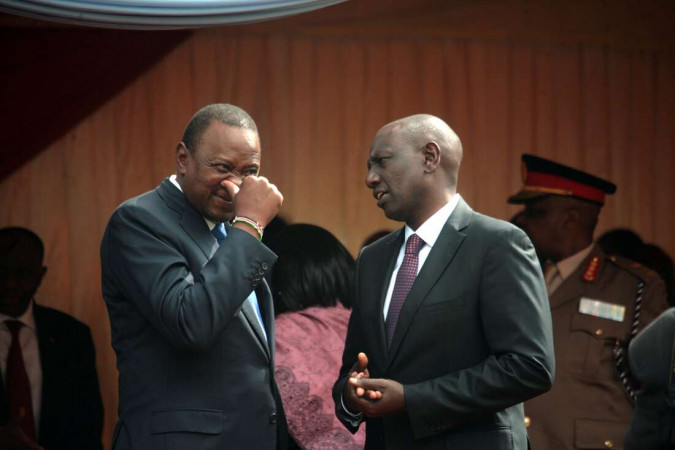Politics of ethnicity root cause of Executive feud
By People.Reporter, July 5, 2022The bitter fallout between President Uhuru Kenyatta and Deputy President William Ruto has exploded into a distasteful national spectacle of unprecedented proportions.
Never before has the incessant public defiance demonstrated by Ruto against his principal been witnessed in Kenya’s political history, thanks to the Constitution of Kenya, 2010.
When the drafters of the Constitution entrenched the office of the Deputy President in the Executive as an integral part of the three arms of government, they sought to give it legal protection.
Little did they imagine that they were creating a dragon that would turn around to bare its fangs at the very office it belonged to. Under the old Constitution, the appointment of the bearer of that office (then known as Vice-President) was at the whim of the President.
The VP was a toothless appendage in the Executive who performed errands at the behest of the Head of State – their stay in the office depending on their level of loyalty and the prevailing political circumstances, mostly guided by regional/ethnic considerations.
They could be fired at will, often subjected to political mischief by operatives close to the seat of power and hounded out of office. The game of musical chairs that registered casualties was perfected during former president Daniel arap Moi’s rule.
While the ethnicity bogey has persisted among the political elite since independence, dominating Kenyan politics to date, the 2010 Constitution sort of rearranged the national order.
Its profound effect dwells in the creation of devolution in a two-tier government (national and county) of 47 mini-states with “little presidents” in governors. It also created a powerful Deputy President with an annexed office and official residence.
Ruto, after initially expressing loyalty more akin to partnership and power-sharing, soon took maximum advantage of the constitutional privilege to assert his own power and unbridled ambition in the UhuRuto administration’s second term.
That is when the iconic estrangement hit the nadir of Kenya’s explosive ethnically driven political establishment, with the epic succession race now bringing disrepute to the highest state symbol.
Analysts pin the bitter split on the “Road to Damascus moment” President Kenyatta reached and Ruto chose to ignore regarding Kenya’s 42 plus communities led since independence nearly 60 years ago by members of only two tribes.
Kenyans yearn for an ethnic change of guard at the nation’s helm, not from those two communities (where both belong). That is not promoting “tribal politics” as the DP is wont to say while pursuing a curiously obsessive quest for the presidency. With a brazen sense of entitlement and inflated political ego backed by bellicose allies and a fervent ethnic constituency.
Our political elite harbour dark, hidden secrets but have also conjured up patriotic moments such as the birth of independence, the “rainbow coalition” and the 2010 Constitution.
Negatives include the authoritarian one-party rule, detentions, assassinations, the 1st August 1982 coup attempt, tribal clashes, and the 2007/2008 post-election violence attributed mostly to ethnic profiling and chauvinism.
A reason perhaps why President Kenyatta opined it was time national leadership emerged from another ethnic community – elected democratically, of course – to Ruto’s chagrin… and the genesis of the disgraceful, raucous Executive feud. A case of sour grapes?
Forget about manifestos, Building Bridges Initiative (BBI), hustlers, or ganja. We have had it all! Kenyan society thrives on a simple interpretation of politics and economics; democracy balanced on a scale of equity, inclusion and unity in diversity.
More Articles

